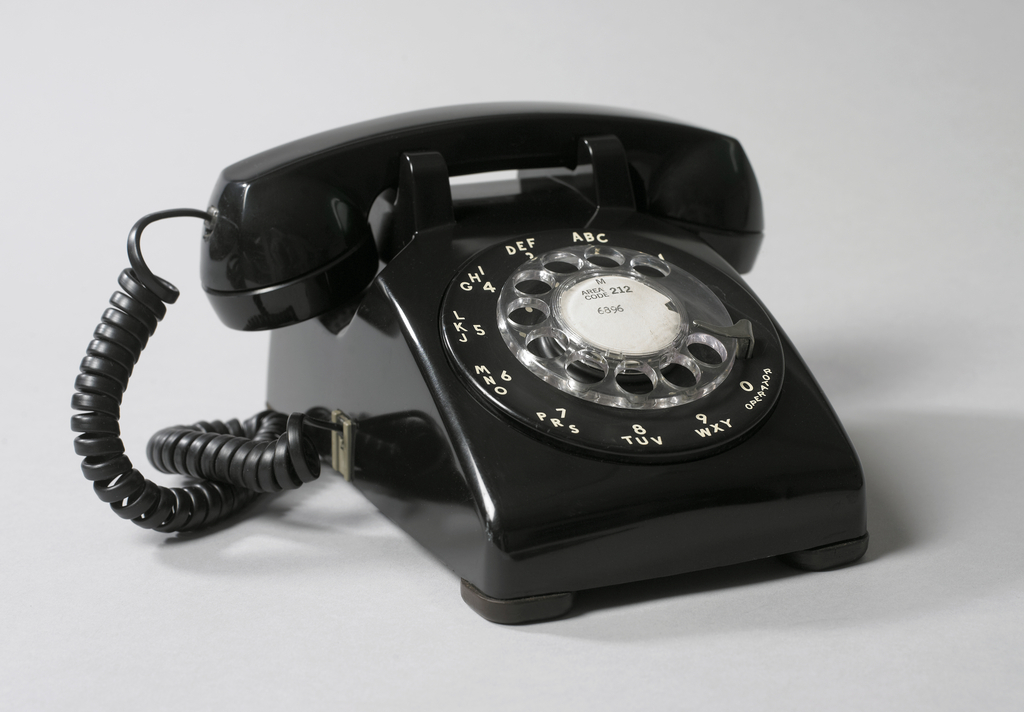If you grew up in America in the mid-1950s-70s, you no doubt encountered the Model 500 telephone or one of its variants in almost every home or workplace you entered. The model 500 became the standard desk-style phone in the U.S., with over 93 million units produced for homes and offices between 1949 and the divestiture of AT&T (the Bell System) in 1984. I have distinct memories of my parents' harvest gold Model 500— the sound of the rotary wheel steadily ticking through the digits as I dialed (sometimes impatiently); the solid feel and warm thunk of the handset when I dropped it back into its cradle after a call; and the mechanical “rrrring” insistently signaling an incoming call.
Industrial designer Henry Dreyfuss began as a consultant to Bell Telephone Laboratories (BTL) in 1930. Working with the company's engineers, he sought simplicity and unity of form in their telephone equipment, resulting in the model 302, the first Dreyfuss design by BTL, in 1937. As demand for telephone service increased after World War II, BTL sought a new design that would be sturdier and easier to service (all telephones were leased at the time), as well as attractive and comfortable for a growing range of customers.
The model 500 debuted in 1949. Dreyfuss's care in designing a user-based object is evident in the changes he made: he modified the angular 302 body into a softer sculptural form in a lighter durable plastic. Unlike the 302's numbers and letters directly under the finger holes, the model 500 had the numbers and letters in a ring outside the finger wheel for increased legibility and greater accuracy when dialing. The new handset, known as the model G, was flatter than its predecessor, making it more comfortable to hold and allowing it to be cradled against the user's shoulder, freeing the hands. This handset design is still used on pay-phones today.
In 1953, BTL and Dreyfuss updated the model 500, producing it in several colors and replacing the black metal finger wheel with a clear plastic version that would compliment any color phone. The 1953 model also eliminated the long straight cord, replacing it with a coiled one, a feature used until the advent of the cordless phone. Deeming the model 500 a success by the mid-1950s, BTL added a wall-mounted variant to the series, introduced a touch-tone version in 1963, with additional models introduced over the next two decades. Production of the traditional Model 500 ceased in the mid-1980s, but many of these durable phones are still available and adaptable for use today.
More about the looks and sounds of the Model 500, and the designs of Henry Dreyfuss:
Flinchum, Russell. Henry Dreyfuss, Industrial Designer: The Man in the Brown Suit. New York: Cooper-Hewitt, National Design Museum, Smithsonian Institution and Rizzoli, 1997.
On this date in 1876, the U.S. Patent Office issued patent 174,465 to Alexander Graham Bell for his telephone.

3 thoughts on “Before There Were Ring Tones There Were Rings”
Hae Won Kwon on February 5, 2016 at 9:14 pm
The link to the youtube video doesn’t work. It’s now feb. 5, 7:13pm MST.
Professor7 on December 9, 2017 at 4:51 pm
As a phone collector I can tell you this is an embarrassing example of a WE 500 set to have in the collection. Many things wrong with it (ie it’s a 1960s model refurbed in the 70s) I would be happy to consult/answer any questions your curators might have about phones.
Heidi on January 24, 2018 at 9:46 am
Professor7, I’m an artist and often use online images for reference. Do you have an online gallery of your collection? i.e., Pinterest, blog, etc. Or a good suggestion of another site? Thanks.